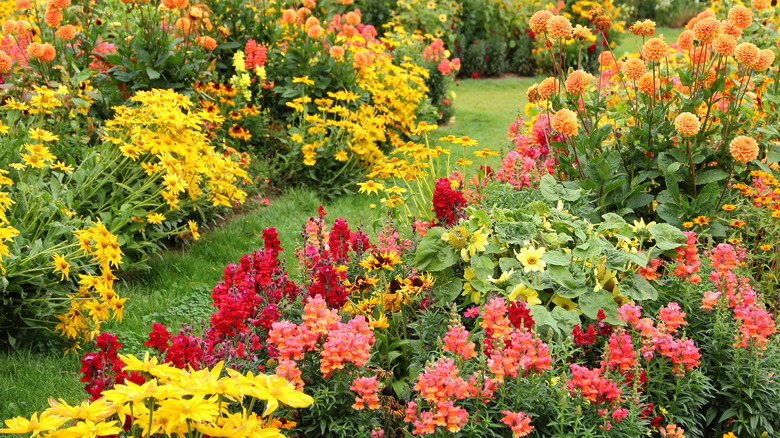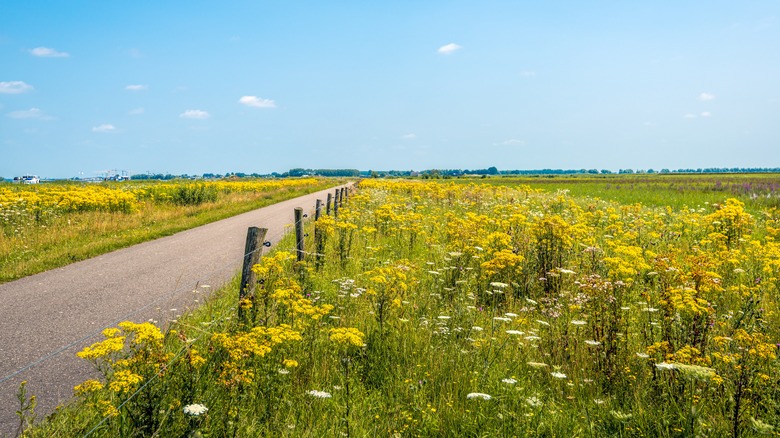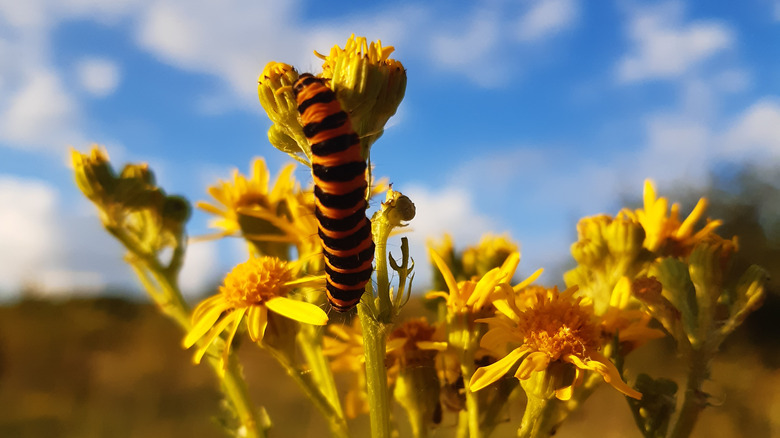Don't Mistake This Toxic Weed For A Harmless Yellow Flower In Your Garden
If there was ever a weed to classify as relentless, it would be tansy ragwort. This plant is native to parts of Europe, Asia, and Africa and has become an invasive non-native plant in the U.S. It's a huge problem in the northwestern states, including Washington, Oregon, and Montana. Though this plant can cause problems, it's a pretty one you'll be tempted to grow in your garden. You might even mistake the invasive weed for a flower since it looks a lot like other plants, including common tansy or St. Johnswort. The abundant daisy-like flowers will catch your eye, but they can seriously harm people, livestock, and pets.
Tansy ragwort is classified as a Class B noxious weed in Washington; it should be heavily controlled in areas where it is already established and prevented in regions it hasn't infiltrated yet. A single plant can produce over 150,000 seeds or grow from roots left behind in the soil, making it a nuisance to get rid of. Fortunately, there are biological and herbicidal controls that can be used effectively, though large infestations are still difficult to remove.
Why you should avoid tansy ragwort
Tansy ragwort, also known as staggerwort and stinking willie, isn't the typical weed that takes over the landscape. According to WebMD, It can be lethal to people, pets, and livestock if eaten, or at the very least cause some stomach upset. This problematic plant thrives in pastures, fields, along roads, and in portions of forests where the trees have been cleared out. It can become a huge problem if it takes over a pasture since it can be lethal to cattle, and if you find it in your backyard, you have to watch out for kids, pets, and wildlife who may get curious and try to eat it. Because it spreads so easily, it can look like a yellow flowering ground cover when left to fill up empty spaces.
Never purposefully introduce tansy ragwort into your garden, and do everything you can to avoid doing it accidentally. The thousands of seeds can be dispersed by natural means like wind and water, or by humans and animals if they stick to clothing or fur. If you have mud on your shoes, seeds can stick to that and drop off in your garden, and moving hay bales around for livestock can result in introducing seeds to your pasture.
Identifying and eradicating tansy ragwort
Tansy ragwort looks a lot like common tansy, but the difference is in the petals. Tansy ragwort (Senecio jacobeae) has petals coming off the center much like a daisy, while common tansy (Tanecetum vulgare) appears to have no petals at all. The "evil" tansy is biennial, growing its leaves in the first year and developing flowers and seeds in the second year. If you spot dark green rosettes of leaves, get rid of them.
The best way to begin eradicating tansy ragwort is to pull them by hand as soon as you recognize them. Dig up all the roots since those left behind can form new plants. Leaving roots behind is one of the common weeding mistakes that will keep them alive in your yard. You can also use black plastic as a type of mulch to prevent seeds from sprouting.
There are a few biological controls you can use to avoid dowsing your property in harmful chemicals. Cinnabar moth larvae eat the leaves off the plants, causing them to die out. This method works well in heavily infested areas since the larvae are starving and want to eat a lot. Flea beetles eat leaves and leave behind tiny holes; though the damage is small, they can kill off overwintering rosettes. Seed fly larvae are important because they destroy seed heads as they're developing, which can be one of the most effective means of eradication.


